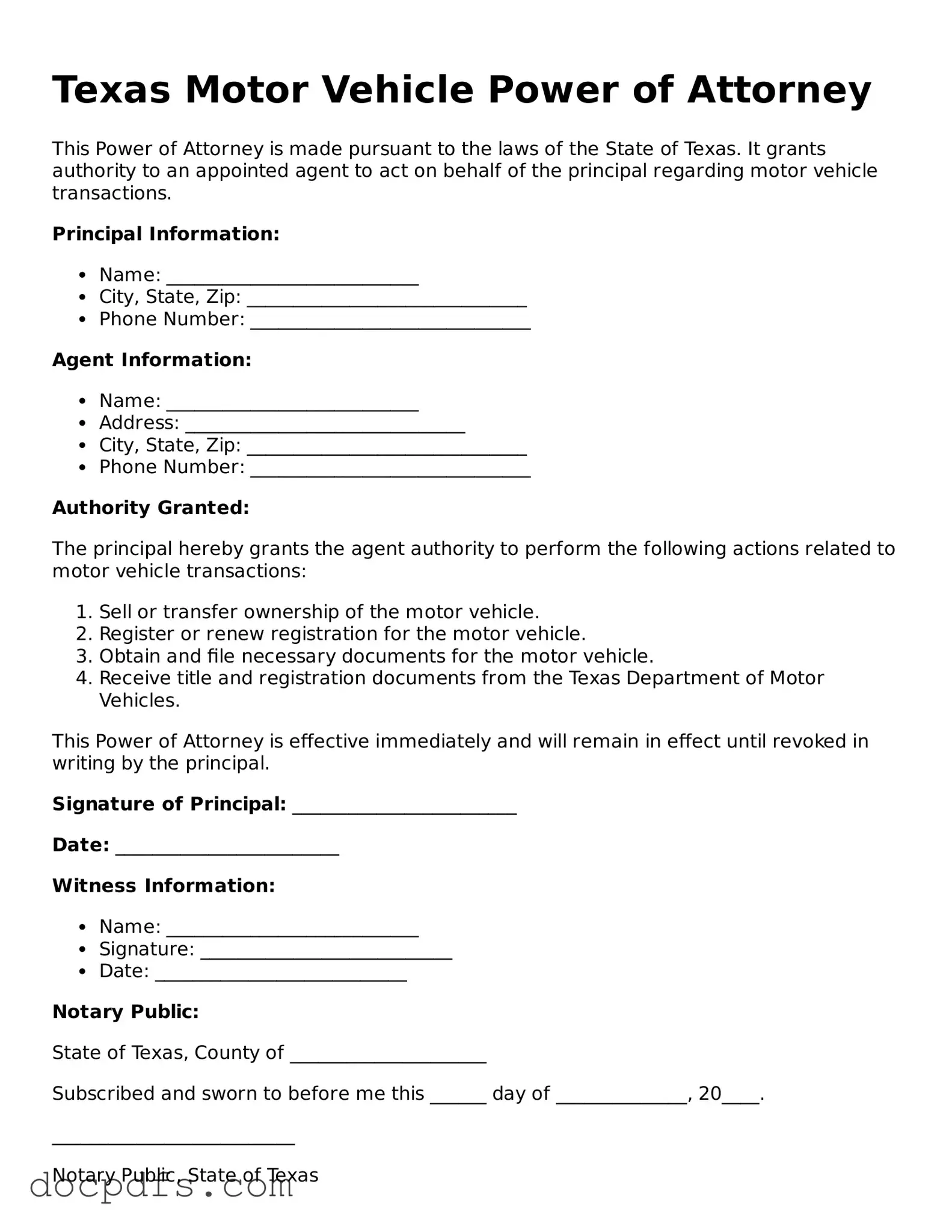The Texas Motor Vehicle Power of Attorney form is a legal document that allows one person (the principal) to authorize another person (the agent) to act on their behalf regarding motor vehicle transactions. This can include tasks such as registering a vehicle, transferring ownership, or obtaining title documents.
Any adult individual can be designated as an agent. This person must be someone you trust, as they will have the authority to make decisions related to your motor vehicle. Common choices for agents include family members, friends, or trusted advisors.
The agent can perform a variety of transactions, including but not limited to:
-
Transferring ownership of a vehicle
-
Applying for a duplicate title
-
Registering a vehicle
-
Obtaining license plates
It's important to specify the powers granted in the form to ensure clarity.
Yes, the Texas Motor Vehicle Power of Attorney form must be notarized to be legally binding. This means that a notary public must witness the signing of the document, which adds a layer of authenticity and protects against fraud.
How long is the Power of Attorney valid?
The validity of the Power of Attorney can vary based on the specific terms outlined in the document. Generally, it remains in effect until the principal revokes it or until the specified purpose has been fulfilled. It's wise to review the document periodically to ensure it still meets your needs.
Can I revoke the Power of Attorney once it is granted?
Yes, you can revoke the Power of Attorney at any time as long as you are mentally competent. To do so, you should provide written notice to the agent and any relevant third parties, such as the Texas Department of Motor Vehicles, to ensure they are aware of the revocation.
What happens if the agent misuses their authority?
If an agent misuses their authority, the principal may have legal grounds to take action against them. This could include filing a civil lawsuit for damages or seeking criminal charges if fraud or theft occurred. It’s crucial to choose an agent carefully and maintain open communication.
While there is no fee specifically for completing the Texas Motor Vehicle Power of Attorney form itself, there may be fees associated with any transactions the agent performs on your behalf, such as registration or title transfer fees. Always check with the Texas Department of Motor Vehicles for the most current fee schedule.
The form can be obtained from the Texas Department of Motor Vehicles website or at any local DMV office. It’s important to ensure you are using the most recent version of the form to avoid any issues during processing.
While it is not necessary to have a lawyer to complete the Texas Motor Vehicle Power of Attorney form, consulting with one can be beneficial, especially if you have specific concerns or complex situations. A lawyer can help ensure that the document meets all legal requirements and adequately reflects your intentions.
